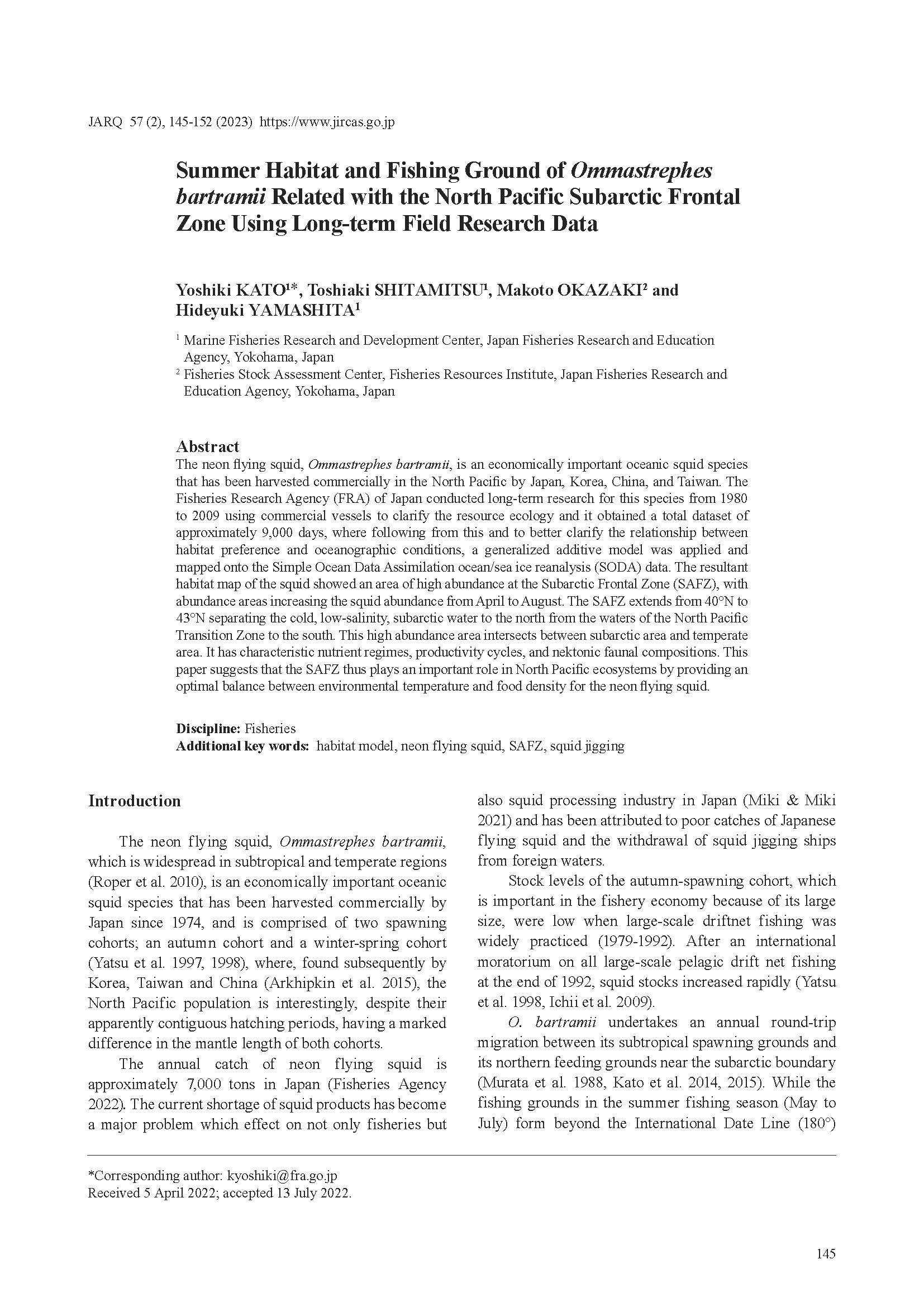The neon flying squid, Ommastrephes bartramii, is an economically important oceanic squid species that has been harvested commercially in the North Pacific by Japan, Korea, China, and Taiwan. The Fisheries Research Agency (FRA) of Japan conducted long-term research for this species from 1980 to 2009 using commercial vessels to clarify the resource ecology and it obtained a total dataset of approximately 9,000 days, where following from this and to better clarify the relationship between habitat preference and oceanographic conditions, a generalized additive model was applied and mapped onto the Simple Ocean Data Assimilation ocean/sea ice reanalysis (SODA) data. The resultant habitat map of the squid showed an area of high abundance at the Subarctic Frontal Zone (SAFZ), with abundance areas increasing the squid abundance from April to August. The SAFZ extends from 40°N to 43°N separating the cold, low-salinity, subarctic water to the north from the waters of the North Pacific Transition Zone to the south. This high abundance area intersects between subarctic area and temperate area. It has characteristic nutrient regimes, productivity cycles, and nektonic faunal compositions. This paper suggests that the SAFZ thus plays an important role in North Pacific ecosystems by providing an optimal balance between environmental temperature and food density for the neon flying squid.

